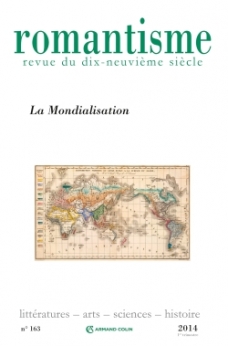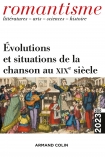
Romantisme n° 163 (1/2014)
Pour acheter ce numéro, contactez-nous
Recevez les numéros de l'année en cours et accédez à l'intégralité des articles en ligne.
Tout entier « suggestion, stylisation, dématérialisation », le petit drame en un acte Les Sept Princesses a généralement été considéré comme l’emblème des « rêveries symbolistes » dont Maeterlinck est souvent tenu comme le parfait représentant. Pourtant, l’analyse dramaturgique de la pièce fait sentir la tension entre la dépense du montré et la sobriété du dit. En d’autres termes, mettre en valeur la matérialité du dispositif scénique et la description des corps offerts au regard exige de replacer le drame à l’horizon des spectateurs de 1892. Or, de ce point de vue, ce sont la culture matérielle de l’époque et plus précisément les sciences neurophysiologistes qui donnent sens à la mise en scène de ce « tableau vivant » où les formes de la maladie mentale renvoient à leur historicité propre.
Maeterlinck’s short one act drama Les Sept Princesses – The Seven Princesses, qualified as consisting entirely in “suggestion, stylisation, dematerialisation”, has generally been considered as the emblem of the “symbolist day-dreams” of which Maeterlinck is often held as the perfect executioner. Nonetheless an analytical reading of the play shows the tension between the expenditure given over to showing and the sobriety of what is said. In other words, to bring to light the staging required by the drama and the description of the bodies given over to the gaze requires replacing the play within the expectations of the 1892 public. And from that point of view it the material culture of that period and more precisely the neurophysiological sciences which give the mise-en-scène of this “live tableau” its meaning, whereby the forms mental illness take refer back to their historicity.

